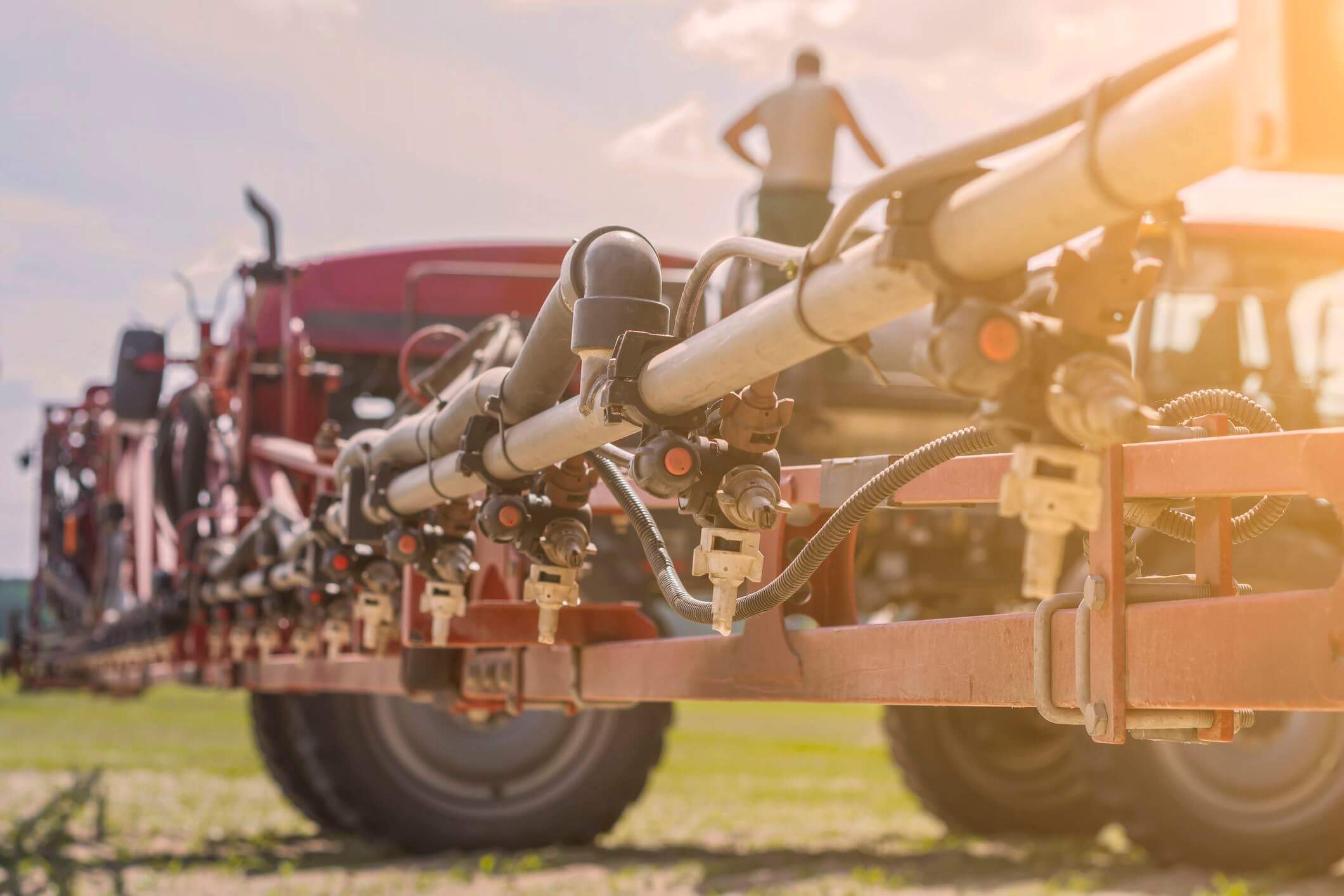Leaf Coverage Is Key To Spring Burndown
Feb 10, 2020

Cool , wet weather is the norm for late-winter to early-spring forecasts. These are not ideal conditions for herbicide efficacy. As a result , a little extra attention to the label details can pay significant dividends when it comes to achieving a complete burndown of your fields ahead of planting.
Use Plenty of Water
You can increase coverage of a herbicide application by increasing your carrier volume. Use at least 15 gallons of water per acre in a ground sprayer and 5 gallons per acre , where possible , with aerial applications.
Not Just Any Adjuvant Will Do
Oil-based herbicides used for burndown applications do a great job of penetrating the leaf surface , but they typically require the use of a surfactant and/or adjuvant to be most effective. Depending on weather and other conditions , different types of adjuvants offer advantages over others.
For late winter through early spring burndown , consider adding StrikeLock® to your tank. When applied at a rate of 8-12 ounces per acre , StrikeLock® gets your active ingredient on target thanks to the unique oil-based formulation with a high concentration of MSO. StrikeLock® has undergone exhaustive testing at the WinField United® Innovation Center to help ensure its efficacy and mixability. It also offers superior drift control and deposition properties to improve the spray solution’s efficiency and efficacy , and delivers more control from each ounce of herbicide.
Read and Follow the Label
Ensure a safe and productive herbicide application by always reading and following the label. Applying more product than recommended typically will not achieve better results , but applying as the label recommends with an adjuvant and adequate carrier will deliver optimal results.
A local GreenPoint AG representative is always available to answer any questions you may have and provide insights into product selection based on the conditions of your specific fields and crops. Don't hesitate to reach out through phone , text , email or in person. Farming is changing. We can help.
StrikeLock and Winfield United are registered trademarks of Winfield Solutions , LLC
Use Plenty of Water
You can increase coverage of a herbicide application by increasing your carrier volume. Use at least 15 gallons of water per acre in a ground sprayer and 5 gallons per acre , where possible , with aerial applications.
Not Just Any Adjuvant Will Do
Oil-based herbicides used for burndown applications do a great job of penetrating the leaf surface , but they typically require the use of a surfactant and/or adjuvant to be most effective. Depending on weather and other conditions , different types of adjuvants offer advantages over others.
- MSO - Methylated seed oil adjuvants are derived from seeds (such as soybeans). They tend to perform better in wet and cold conditions than other adjuvants.
- COC - Crop oil concentrate adjuvants are actually derived from petroleum products , not crops. We recommend a high surfactant oil concentrate (HSOC) , which is a type of COC , when the weather warms.
- Many other acronyms - Other common adjuvants include vegetable oil concentrates (VOC) , modified vegetable oils (MVO or MSO) , and others. Talk with your GreenPoint AG advisor to determine which is best for your specific need.
For late winter through early spring burndown , consider adding StrikeLock® to your tank. When applied at a rate of 8-12 ounces per acre , StrikeLock® gets your active ingredient on target thanks to the unique oil-based formulation with a high concentration of MSO. StrikeLock® has undergone exhaustive testing at the WinField United® Innovation Center to help ensure its efficacy and mixability. It also offers superior drift control and deposition properties to improve the spray solution’s efficiency and efficacy , and delivers more control from each ounce of herbicide.
Read and Follow the Label
Ensure a safe and productive herbicide application by always reading and following the label. Applying more product than recommended typically will not achieve better results , but applying as the label recommends with an adjuvant and adequate carrier will deliver optimal results.
A local GreenPoint AG representative is always available to answer any questions you may have and provide insights into product selection based on the conditions of your specific fields and crops. Don't hesitate to reach out through phone , text , email or in person. Farming is changing. We can help.
StrikeLock and Winfield United are registered trademarks of Winfield Solutions , LLC